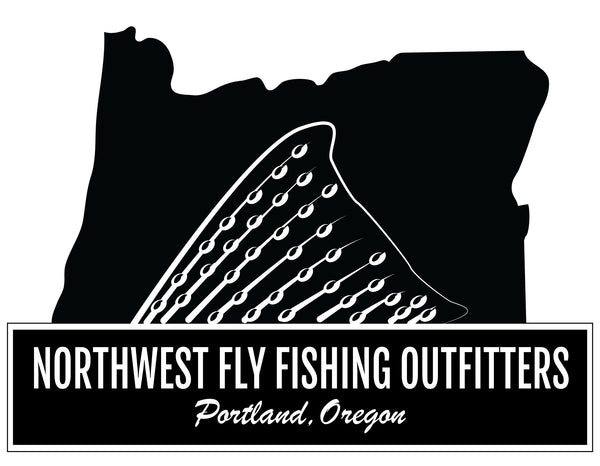Your Guide to Breaking Down Small Rivers & Streams
There's something magical about standing in a small river, surrounded by nature, just you and the trout. Small rivers and streams offer some of the most rewarding fly fishing experiences, but they also require specific techniques and approaches that differ from larger waters.
At Northwest Fly Fishing Outfitters, we've spent over three decades exploring the intimate waterways of the Pacific Northwest and beyond. Today, we're sharing our collective wisdom and while we spend a lot of our time out west, these tips will carry across the globe for fishing smaller water for trout.
Reading Small River Water: The Foundation of Success
Before we dive into specific techniques, understanding how to read small river water is essential. Unlike larger rivers where features can span dozens of yards, small rivers pack diverse habitats into compact spaces.
The key to success lies in identifying these microhabitats where trout hold, feed, and rest. Let's explore the primary features you'll encounter:

Mastering the Riffle

Riffles are shallow sections with broken water flowing over rocks or gravel. They're oxygen-rich and often loaded with insects, making them prime feeding grounds for trout.
When approaching riffles:
- Position yourself downstream and cast upstream, allowing your fly to drift naturally
- Focus on the transition zones where riffles deepen into runs
- Use shorter casts (15-25 feet) for better control and presentation
- Try a dry fly with a nymph dropper to cover multiple feeding zones
The shallow, broken water of riffles provides excellent cover for trout, allowing them to feed while remaining protected from predators above.
Navigating Back Eddies:
Back eddies form when water flows around obstacles and creates reverse currents. These calm pockets serve as perfect resting areas for trout and often collect food that drifts downstream.
When fishing back eddies:
- Approach with stealth—these areas are typically calm and clear
- Cast beyond the eddy and allow your fly to drift into the calm water
- Pay attention to the seam where the main current meets the eddy
- Be prepared for subtle takes as trout in eddies often feed leisurely
A well-presented fly in a back eddy can produce some of the day's largest trout, as these areas often harbor experienced fish seeking refuge from faster currents.
Soft Seams: The Feeding Highways
Seams occur where two currents of different speeds meet, creating a visible line in the water. Soft seams—where fast water meets slower water—are prime feeding lanes for trout.

For successful seam fishing:
- Position yourself to cast across or slightly upstream of the seam
- Mend your line to prevent drag and achieve a natural drift
- Watch for subtle rises or flashes as trout move to take your fly
- Focus on the slower side of the seam where trout can hold with less energy expenditure
The boundary between fast and slow water concentrates food and provides trout with easy access to meals while minimizing energy output—a perfect combination.
Tailouts: The Overlooked Opportunity
Tailouts are the downstream ends of pools where water begins to shallow and accelerate. Many anglers pass these areas by, but they often hold feeding trout, especially during insect hatches.
When fishing tailouts:
- Approach from downstream when possible to avoid spooking fish
- Use lighter tippets (5X-6X) for better presentations in the shallower water
- Watch for subtle rises or feeding lanes
- Try emerger patterns as insects often become vulnerable in these transitional areas
Tailouts shine during evening hatches when insects become active and trout move into these areas to feed on emerging insects.
Buckets: The Deep-Water Hideaways
Buckets are deeper depressions in the riverbed, often found behind large rocks or logs. These deeper pockets provide safety, rest, and feeding opportunities for larger trout.
For effective bucket fishing:
- Target the upstream edge of the bucket where trout often position to feed
- Use weighted nymphs or streamers to reach the proper depth
- Pay attention to your drift as currents around buckets can be complex
- Be patient and make multiple casts to cover different depths
Buckets often hold the largest trout in a section of river, making them worth the extra effort and attention.
Gear Considerations for Small Rivers
Small rivers demand specialized approaches to tackle and equipment:
- Rod: 7.5-8.5 foot 3-5 weight rods offer ideal control and sensitivity
- Leader: 7.5-9 foot leaders tapering to 4X-6X tippet depending on conditions
- Flies: Focus on sizes 12-18 for most small river situations
- Wading: Consider wet wading in summer or lightweight waders for better mobility
Seasonal Considerations for Small Rivers
Small rivers change dramatically with the seasons. Spring brings higher flows and potential for larger fish moving up from larger systems. Summer offers more predictable conditions but requires stealthier approaches as water levels drop. Fall brings spawning activity and aggressive feeding before winter, while winter rewards the dedicated angler with solitude and challenging but rewarding fishing.
Conservation and Etiquette
Small rivers are delicate ecosystems. Practice catch and release with barbless hooks, minimize wading in potential spawning areas, and always respect private property boundaries. Remember that small streams often have limited carrying capacity, so treating these waters with care ensures they remain productive for future generations.
Final Thoughts: The Joy of Small Water
There's a special intimacy to small river fly fishing that larger waters simply can't match. The close quarters, the detailed reading of water, and the direct connection to the environment create an experience that represents fly fishing at its purest.
Whether you're a beginner looking to develop fundamental skills or an experienced angler seeking new challenges, small rivers offer endless opportunities for growth, discovery, and memorable days on the water.
Visit us at Northwest Fly Fishing Outfitters in Portland for personalized advice on local small rivers, guided trip opportunities, and the perfect gear for your next small water adventure. Our team of experienced anglers is always ready to share knowledge and stories from our favorite small streams.

